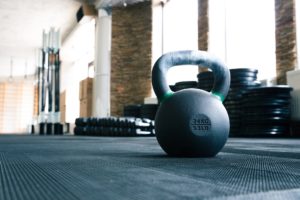CrossFit is a type of exercise where the programs involve constant variability of high-intensity functional movements with the goal of optimising physical proficiency across a number of domains including: cardiovascular and respiratory endurance, stamina, strength, flexibility, power, speed, coordination, agility, balance and accuracy. While all exercise and sport can create injury, it seems that CrossFit has developed a bad name for itself due to the high-speed, high-impact approach to exercise. CrossFit workouts include highly functional movements including; Olympic lifting, gymnastics, running, and rowing. The workouts are generally time-based which means you DO NOT STOP until the timer is finished, hence the high intensity. Within these time based workouts you push your body to the absolute limit, which underpins the core philosophy of what CrossFit is all about: pushing your body to the limit. And it is this philosophy that is the key defining principal of the CrossFit and the culture that comes with it. But is this safe and at what point does this philosophy have detrimental effects to its participants?
CrossFit attracts a large variable following ranging from complete gym newbies or novice gym goers to the elite athlete who is looking to perfect their CrossFitting and find that peak performance. With these large variations in fitness ability, body awareness, and understanding of risk and injury, it’s easy to see where things can go wrong in a WOD (CrossFit lingo for workout of the day) when all of these people are participating in the same workout. There is minimal research currently out there in regards to injury rates within CrossFit. However, there is one study out of the USA from the University of Rochester that wanted to establish an injury rate among CrossFit participants and also to identify any trends between injury rates and demographic categories, gym characteristics and the athletic abilities among CrossFit participants.
So what did they find? The overall injury rate was pretty high at 20% (75/346), and not surprisingly males (53/231) were more likely to injure themselves than females (21/150). Even less surprising is that those participants who had the help from a coach or trainer during their workouts correlated with a decreased injury rate. The most common injuries reported were shoulder injuries due to gymnastics exercises and then lower back injuries due to Olympic lifting.
So, how do you enjoy CrossFit without hurting yourself? Firstly, many CrossFit gyms now have a beginner program where you learn the fundamentals of CrossFit and is primarily focussed on skill and technique. The first few weeks is going to be key to gaining that base core strength and mobility to perform the exercises safely. Secondly, if you feel like something does not feel right in your body i.e. too heavy, or “wrong” it is a good sign that you are probably not ready to be lifting that weight or you are just doing too much. Listen to you body and back off. These injuries come generally from progressing too soon in the workout, e.g. performing an Olympic lift that is too heavy under fatigue is definitely going to cause some damage in your shoulder or your lower back if you have not taken the correct and necessary steps in developing the basic underlying skills that is needed to perform these highly technical tasks.
As a CrossFitter myself who is also a Physiotherapist, I find more often than not I am one of the girls in the group who is lifting a lighter weight (with perfect technique) as I understand the risks of injury all too well! Depending on what your goals are in CrossFit will also factor into your risk of injuring yourself. Most people are in it to get fitter, lose weight and to feel good. Others are in it for a competitive edge and treat it like a sport whereby the aim isn’t to lose weight and feel good but to win, and competitive sports people will do anything to win including putting their body on the line. So my advice to you is to determine what your goals are for CrossFit and then to prioritise them. As a Physio I advise prioritising your bodies safety and health above all else including over winning the WOD! But more specifically, it’s about finding that sweet balance between correct form/technique and gradually progressing when you’re ready so that you can be competitive within yourself and also with those around you in a safe and pain free state! Train hard to build yourself up, not to break yourself down.
If you have any further questions about your CrossFit programme or an injury you may have developed book in to see our Physio’s at Bend + Mend in Sydney’s CBD and get back to training quicker!






